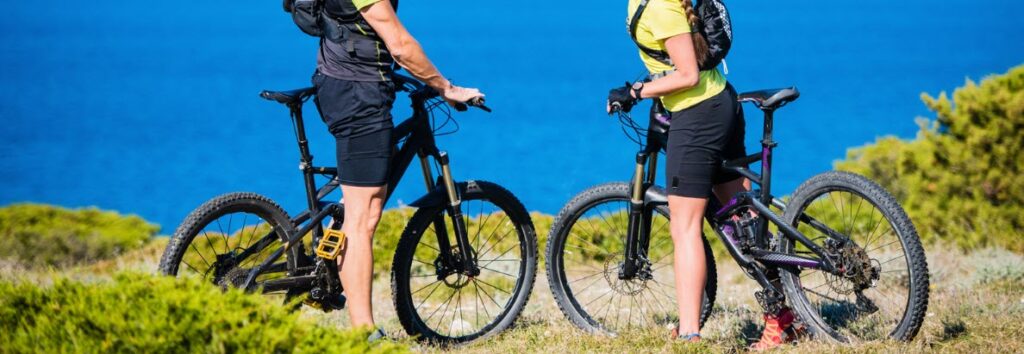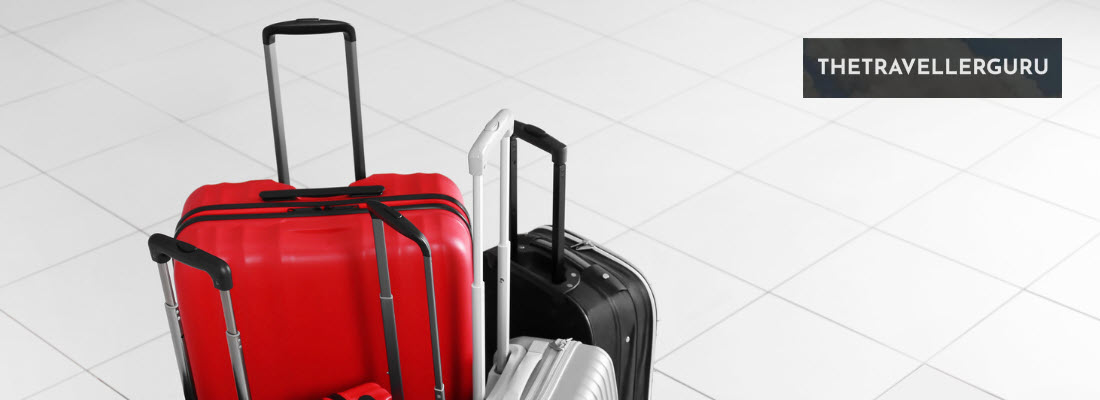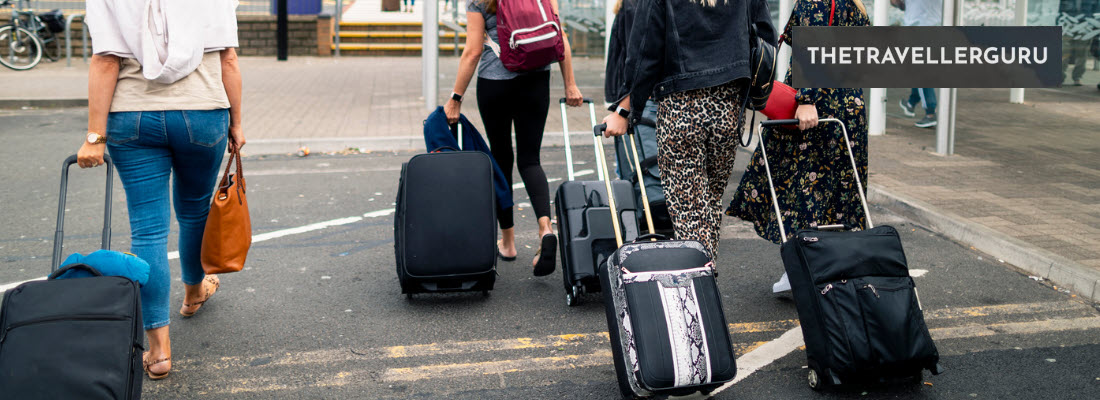Hey there travel enthusiasts and welcome to my post where we will check out my 5 tips for flying with a mountain bike this year. Flying with your mountain bike can be a daunting task, especially if you’ve never done it before. But with the right preparation and knowledge, it can be a hassle-free experience.
So for those of you looking to hit the trails in some far off (or maybe not so far off) exotic places, let’s have a look at some tips tips to make things a little easer for you.
Can you bring your golf clubs with you on a plane?
Before we start, let’s first just check out some of the areas of concern when it comes to flying with a mountain bike. To start with, even thought every airline has its policies to do with luggage restrictions, most will allow you to take them with you with some conditions. In my experience, these are:
- Mountain bikes are not considered standard baggage meaning you will usually have to pay an extra baggage fee.
- You can generally not check your bags in at the desk – rather you will have to lug it over to the oversized luggage depot (this is where you will pick them up from as well).
- In many cases, mountain bikes and all additional equipment must be stowed within a hard-shell travel bag to safeguard the equipment while in transit.
- Even though it is considered oversized, many airlines still implement weight limits as well so it is well worth checking these out before you pack.
And once you land, you may also be subjected to local bio regulations as well – e.g. here in Australia, we usually have to clean our bikes and shoes etc. before we can cross through customs.
Tips For Flying With a Mountain Bike
Ok, so with all that in mind, let’s check out my 5 mountain bike travel tips below:
1. Choose the Right Bike Case
When it comes to flying with your mountain bike, choosing the right bike case is crucial to ensure that your bike arrives at your destination in one piece. Here are two types of bike cases to consider:
Hard Case
Hard cases provide the most protection for your bike during travel. They are made of durable materials such as plastic or aluminum and they are designed to withstand rough handling by baggage handlers. Here are some pros and cons of using a hard case:
Pros
- Provides the most protection for your bike during travel
- Durable and long-lasting
- Can be locked for added security
- Some models have wheels for easy transport
Cons
- Heavier and bulkier than soft cases
- More expensive than soft cases
- May exceed airline weight limits, resulting in additional fees
Soft Case
Soft cases are made of lightweight materials such as nylon or canvas and are designed to be more compact and easier to transport than hard cases. Here are some pros and cons of using a soft case:
Pros
- Lightweight and compact
- Generally less expensive than hard cases
- Can be folded and stored when not in use
- May be more flexible in terms of fitting different bike sizes
Cons
- Provides less protection than hard cases
- May not be as durable as hard cases
- May not be able to be locked for added security
When choosing a bike case, consider factors such as the size of your bike, your budget and your travel frequency. Regardless of which type of case you choose, be sure to pack your bike carefully and follow airline guidelines to avoid any additional fees or damage to your bike.
Check out these: 3 Best Mountain Bike Travel Cases
2. Pack Your Mountain Bike Properly
When it comes to flying with your mountain bike, packing it correctly is essential. Follow these steps to ensure your bike arrives safely at your destination.
Disassembling the Bike
Before packing your bike, you need to disassemble it. Here are the steps to follow:
- Remove the pedals, wheels, handlebars and seat post.
- Wrap the removed parts securely in bubble wrap or foam.
- Turn the handlebars perpendicular to the frame and secure them with zip ties or tape.
- Deflate the tires partially or fully, depending on your airline’s requirements.
Securing Loose Parts
It’s essential to secure all loose parts to prevent damage during transport. Here are some tips:
- Use a sturdy bike box or bag designed for bicycles.
- Use padding to fill any gaps between the bike and the box or bag.
- Secure the bike frame to the box or bag with straps or padding to prevent it from moving around.
- Use bubble wrap or foam to protect the bike’s frame and other parts from scratches or dents.
Padding and Protection
Padding and protection are crucial for keeping your bike safe during transport. Here are some tips:
- Use foam padding to protect the bike’s frame and other parts.
- Use cardboard or foam padding to protect the bike’s wheels.
- Use bubble wrap or foam to protect the bike’s handlebars and other parts from scratches or dents.
- Use zip ties or tape to secure the padding in place.
By following these steps, you can ensure that you are giving your mountain bike the best chance of arriving at your destination safely.

3. Learn to Navigate the Airport
Flying with your mountain bike can be a daunting experience, but with a little preparation, it can be a breeze. Navigating the airport can be the most stressful part of the process, but with a few tips, you can make it a smooth experience.
These include:
Check-In Process
When you arrive at the airport, head to the check-in counter to check your bike. Make sure you have all the necessary paperwork and identification. Some airlines require you to fill out a special form for oversized luggage like bikes so be sure to ask the airline beforehand to avoid any surprises.
If you have a bike bag or box, make sure it is properly labeled with your name, address and contact information. Consider adding a fragile sticker to the bag or box to alert baggage handlers to handle it with care.
Security Checks
One of the biggest porblems you will probably face here is tools etc. Many airlines will not allow things such as screwdrivers, spanners etc. to be taken onto planes in carry-on luggage.
Be sure to remove any tools or sharp objects from your bike bag or box and place them in your check-in bag before you go through security.
4. Arrival and Unpacking
Once you arrive at your destination, you’ll need to retrieve your bike and reassemble it before hitting the trails. Follow these tips to make the process as smooth as possible.
Retrieving Your Bike
When you arrive at the baggage claim area, look for the oversized luggage section. Your bike will likely be brought out separately from the rest of the luggage. Keep an eye out for it and make sure to check it over for any damage before leaving the airport.
Reassembling Your Bike
Before you start reassembling your bike, make sure you have all the necessary tools and parts. It’s a good idea to bring a small toolkit with you, including a multi-tool, pump and any spare parts you might need.
- Start by unpacking your bike from the bag or box. Lay out all the parts and inspect them for any damage that may have occurred during transport.
- Reattach the wheels, making sure they are securely fastened. Inflate the tires to the recommended pressure.
- Reattach the handlebars, making sure they are aligned properly with the front wheel. Tighten the stem bolts to the recommended torque.
- Reattach the pedals, making sure they are threaded in the correct direction. Use a pedal wrench to tighten them securely.
- Reattach the seat post and saddle, making sure they are at the correct height. Tighten the seat post clamp to the recommended torque.
- Check that all the bolts and fasteners are tightened to the recommended torque. Give the bike a quick once-over to make sure everything is in working order.
By following these tips, you can ensure that your bike is ready to hit the trails as soon as possible.

5. Insurance and Damage Control
When flying with your mountain bike, it’s important to have insurance coverage in case of any damages or losses. Here are some tips to help you protect your bike and ensure that you’re covered in case of any incidents.
Getting Insurance
Before you fly, check with your insurance provider to see if your bike is covered under your existing policy. Some homeowners’ and renters’ policies, as well as certain credit cards, may cover your baggage already. However, it’s important to check the specific details of your policy to make sure that your bike is covered and to what extent.
If your existing policy doesn’t cover your bike, consider purchasing luggage insurance for your trip. Many airlines offer insurance options for checked baggage, including bikes. Alternatively, you can also purchase separate bike-specific insurance policies from dedicated bike insurers or general insurers that cover bikes.
Dealing with Damages
Despite your best efforts, there is always a risk of damage when flying with your mountain bike. Here are some steps you can take to minimize the risk of damage and to deal with any damage that does occur:
- Pack your bike carefully in a bike bag or box, and use plenty of padding to protect the frame and components.
- Remove the pedals, wheels, handlebars, and seat post, and wrap them securely in bubble wrap or foam. Use zip ties or tape to secure the frame and other loose parts.
- Take photos of your bike before packing it, so that you have documentation of its condition before the flight.
- When you arrive at your destination, inspect your bike carefully for any damage. If you notice any damage, take photos and report it to the airline immediately.
- Keep all documentation, including photos, receipts, and insurance policies, in case you need to file a claim.
By taking these steps, you can minimize the risk of damage to your mountain bike and ensure that you’re covered in case of any incidents.
Conclusion
There you have it, my useful tips for flying with golf clubs. Let me know how this article helped you, and as usual, let me know of your experiences here or if there is anything I need to add.
Also, please do not hesitate to comment below if you have any questions, concerns, or corrections or would like me to check anything else out for you.
Until next time.
Have fun
Paul






